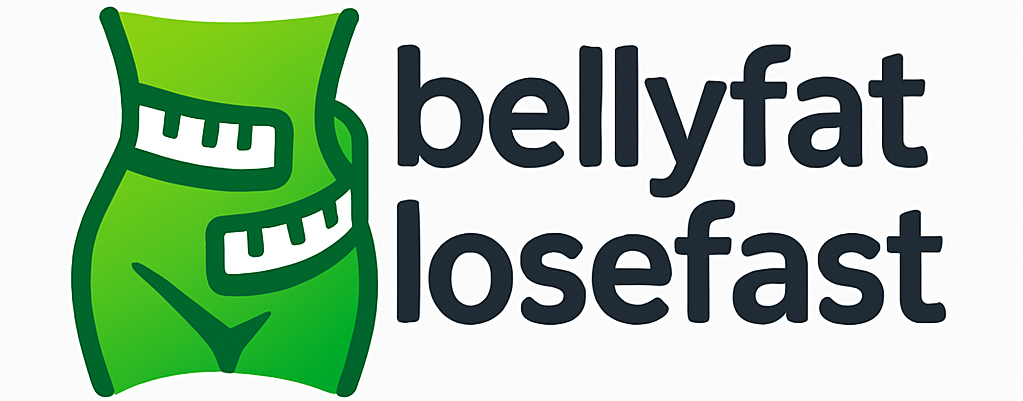How to Lose Weight After a Hysterectomy

How to lose Belly fat After Hysterectomy : First of all hysterectomy is a surgery to remove the uterus, often done to relieve serious health issues like heavy bleeding, fibroids, or chronic pain. It’s a big step, both physically and emotionally, as it ends periods and the ability to become pregnant. Many women find relief after the procedure, but it’s normal to have mixed feelings support and understanding are important during recovery.
Start Abdominal Exercises after Hysterectomy
Be sure to check with your doctor before starting any exercise after a hysterectomy in your body needs time to heal.
This gentle core routine is meant for women who’ve been given the go-ahead to return to general activity, usually around 6 to 8 weeks after surgery. That said, everyone recovers differently, and the right time to begin can depend on how you’re healing and the type of hysterectomy you’ve had. Listen to your body, and take things at your own pace.
Benefits of Deep Abdominal Exercises after Hysterectomy
Benefits of Deep Abdominal Exercises After a Hysterectomy:
- Builds Core Strength – Gently rebuilds the muscles that support your spine and pelvis, helping you feel more stable and strong.
- Improves Posture – Helps you stand taller and feel more aligned, easing any tension in your back or hips.
- Supports Recovery – Encourages gentle movement, which can aid in the healing process and reduce any stiffness.
- Reduces Swelling – Can help with circulation, reducing that bloated feeling that sometimes comes after surgery.
- Enhances Bladder and Bowel Control – Strengthening your core also helps support your pelvic floor, improving bladder and bowel function.
- Rebuilds Confidence – As you reconnect with your body, these exercises can help you feel more in control and positive about your recovery.
- Prevents Future Strain – A strong core helps protect you as you return to everyday activities, making it easier to stay injury-free.
Suitability of Abdominal Exercises After a Hysterectomy:
- Post-Approval – Only start once your doctor clears you, usually 6-8 weeks after surgery.
- Gentle Progression – Begin with low-impact, deep abdominal exercises to avoid strain.
- Healing Focus – Ensure exercises target core strength without stressing the pelvic area.
- Adapt to Your Recovery – Listen to your body and modify exercises based on your individual healing process.
- Avoid High-Impact – Steer clear of intense movements until you’re fully ready.
Abdominal Exercise Routine for Hysterectomy Recovery
- Pelvic Tilts – Gently engage your core by tilting your pelvis forward and back. Helps with posture and core activation.
- Kegel Exercises – Strengthens the pelvic floor, improving bladder control and supporting recovery.
- Leg Slides – Slide one leg at a time while lying down to engage deep abdominal muscles without straining.
- Cat-Cow Stretch – Gently stretches and strengthens the spine and core, improving flexibility.
- Modified Plank – Start with knees on the ground, engaging the core without putting pressure on the abdomen.
- Breathing Exercises – Deep breathing helps activate the diaphragm and lower abdominal muscles for a gentle core workout.
How to Lose Belly Fat after Hysterectomy Daily Exercise Routine
Gradually Progress to 10 Toning Exercises with 3-5 Pelvic Tilts Between Each Core Abdominal Movement, Adjusted to Your Comfort Level.
- Leg Extension (Above Ground) – Extend one leg at a time while keeping your core engaged. If needed, modify by sliding your foot along the ground (using a sock for smooth movement).
- Pelvic Tilts – Gently tilt your pelvis forward and back, helping to activate your core and relieve lower back tension.
- Knee Lifts – Lift one knee at a time towards your chest, focusing on engaging your lower abs.
- Pelvic Tilts – Repeat pelvic tilts to maintain core activation and support pelvic floor strength.
- Knee Lift with Leg Out to Side – Lift one knee, then extend the leg out to the side (or modify with a bent knee fallout to target your core without added strain).
- Pelvic Tilts – Another round of pelvic tilts to keep your core engaged and support recovery.
Why is my Stomach Bigger after Hysterectomy
It’s common to feel like your stomach is bigger after a hysterectomy due to a combination of factors like swelling, changes in hormones, and the body adjusting to the surgery. Your abdomen may also feel bloated from gas or fluid retention during recovery. As your body heals and hormones balance out, this should gradually improve. If you’re concerned, it’s always a good idea to check in with your doctor.
Causes of Increased Belly Size after Hysterectomy
Internal Swelling
After a hysterectomy, it’s common to experience swelling in the belly, which can sometimes be mistaken for belly fat. The internal swelling in the lower abdomen and pelvic area can take several months to fully subside.
Weak Deep Abdominal Muscles
A hysterectomy involving abdominal incisions can affect the deep abdominal muscles, causing them to become weak or less engaged. As these muscles stop working properly, your belly may appear floppier or larger in size.
The Best Way to Lose Belly Fat after Hysterectomy
The most effective way to lose weight and reduce belly fat after a hysterectomy is by creating an energy deficit burning more energy than you consume.
- Dietary Changes – Reducing your calorie intake to control energy consumption.
- Diet and Exercise Together – Combining healthy eating with pelvic floor-safe exercises is the most effective approach to weight loss for most women.
This balanced combination of diet and exercise will help you reach your weight loss goals in a sustainable way.
Hysterectomy Recovery Diet for lose Belly Fat
The Mediterranean-style diet is an excellent choice for recovery after a hysterectomy. This diet supports weight management and weight loss while providing essential nutrients, fiber, and protein. Protein is particularly important during recovery because it aids in tissue healing, so incorporating protein-rich foods into your daily meals is crucial.
The Mediterranean diet emphasizes a variety of plant-based foods, including vegetables, fruits, legumes, grains, and seeds, as well as seafood, particularly fish. It also includes healthy fats, such as olive oil, and allows for moderate consumption of chicken, eggs, cheese, and yogurt. Processed foods and sugars are kept to a minimum, and red meat is consumed only about twice a week.
Here’s a Hysterectomy Recovery Diet table designed to help with belly fat loss while promoting overall recovery. The focus is on nutrient-dense, anti-inflammatory foods that support tissue healing, improve metabolism, and manage weight.

| Food Category | Foods to Include | Benefits |
|---|---|---|
| Protein-Rich Foods | Lean poultry (chicken, turkey), fish (salmon, tuna), eggs, legumes (lentils, chickpeas), tofu, Greek yogurt, cottage cheese | Essential for tissue healing, muscle repair, and metabolism |
| Healthy Fats | Olive oil, avocados, nuts (almonds, walnuts), seeds (chia, flax, pumpkin) | Supports heart health, hormone regulation, and satiety |
| Fruits | Berries (blueberries, strawberries), apples, pears, citrus fruits (oranges, grapefruit) | High in fiber and antioxidants, helps manage inflammation and provides essential vitamins |
| Vegetables | Leafy greens (spinach, kale), cruciferous veggies (broccoli, cauliflower), bell peppers, zucchini, tomatoes | Packed with fiber, vitamins, and minerals, low in calories |
| Whole Grains | Brown rice, quinoa, barley, whole wheat bread, oats, farro | High in fiber, helps regulate digestion, and keeps you full longer |
| Legumes & Beans | Lentils, chickpeas, black beans, kidney beans | Rich in plant-based protein, fiber, helps maintain steady blood sugar levels |
| Low-Fat Dairy | Greek yogurt, low-fat cheese, skim milk | Good source of calcium and protein, promotes bone health |
| Herbs & Spices | Turmeric, ginger, garlic, cinnamon, basil, rosemary, oregano | Anti-inflammatory properties, aid digestion and metabolism |
| Hydration | Water, herbal teas (chamomile, peppermint), infused water (cucumber, mint) | Keeps you hydrated, supports metabolism, and aids digestion |
| Limited/Occasional Foods | Red meat (twice a week), dark chocolate (in moderation) | Provide protein and iron, but should be limited to prevent inflammation and excess fat |
| Foods to Avoid | Processed foods, sugary snacks, refined carbs (white bread, pastries) | These can contribute to weight gain, inflammation, and disrupt hormone balance |
Key Tips for Belly Fat Loss After Hysterectomy:
- Eat Protein-Rich Meals: Make sure every meal contains some form of lean protein for tissue repair and muscle-building.
- Healthy Fats Over Processed Oils: Focus on sources like olive oil, avocado, and nuts for better metabolism support.
- Minimize Refined Carbs: Opt for whole grains instead of white bread or sugary snacks to help stabilize blood sugar levels.
- Stay Hydrated: Drink plenty of water and herbal teas to support digestion and metabolism.
- Smaller, Balanced Meals: Eat smaller meals throughout the day to avoid overeating and support your metabolism.
How To Lose Lower Belly Fat Female Fast
The Best Hysterectomy Recovery Exercises for Weight Loss
During the early stages of your recovery, focus on weight management rather than trying to lose weight. This is not the ideal time to be dieting or engaging in intense exercise. Instead, prioritize maintaining a healthy weight through balanced eating and gentle activities like walking.
Gradually increase your walking duration using a time-based approach during the first 6-8 weeks of recovery. This means tracking how long you walk and gradually increasing the time each week, rather than pushing for faster speeds or longer distances.
Once your doctor clears you to resume general exercise, opt for low-impact activities where at least one foot remains on the ground at all times.
Some great low-impact exercises for weight loss and toning after a hysterectomy include:
- Stationary bike
- Elliptical machine
- Low-impact aerobics
- Outdoor cycling
- Low-impact dancing
How To Flatten Your Stomach After A Hysterectomy?
How to Reduce Lower Belly Fat Without Exercise at Home
Losing weight after a hysterectomy can definitely be tough, but take it one step at a time and remember to be kind to yourself. Focus on eating nourishing foods, moving your body gently with activities like walking, and give yourself grace during the recovery process. It’s all about making steady progress, not perfection. Wishing you all the best on your journey—you’re stronger than you think! 🌷✨

